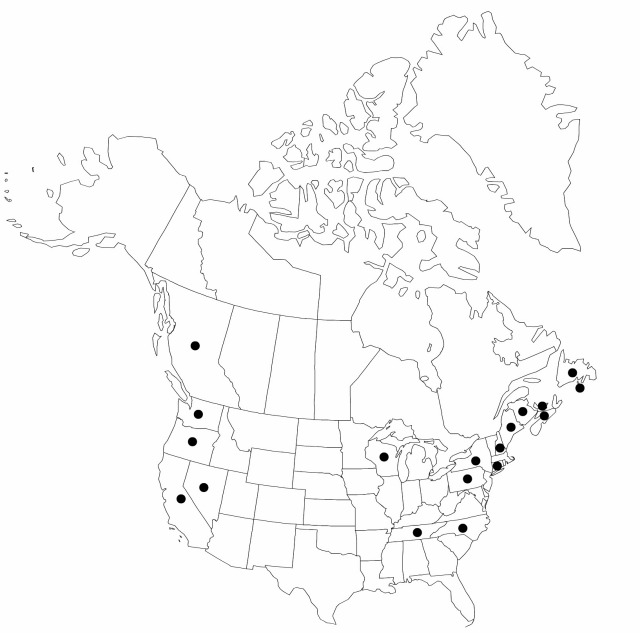Carex ovalis
Trans. Linn. Soc. 2: 148. 1794.
Plants densely cespitose. Culms (24–)35–85 cm. Leaves: sheath adaxially white-hyaline, summits U-shaped to rounded; distal ligules 2–3 mm; blades (1–)2–4(–5) per fertile culm, flat ± to tip, 7–22 cm × (1.5–)2–3.5(–4) mm. Inflorescences stiffly erect, usually open, brown, 1.5–4 cm × 10–15 mm; proximal internode (2.5–)4–10 mm; 2d internode (2.5–)3–6 mm; proximal bracts scalelike or bristlelike, shorter than inflorescences. Spikes 5–9, usually loosely aggregated, ovoid to broadly ovoid, 9–14 × 6–8 mm, base attenuate, apex rounded to tapered. Pistillate scales reddish gold to brown or greenish, often white-hyaline at tip or base, with pale or green midstripe, narrowly to broadly ovate, 3.4–5 mm, length and width less or greater than perigynia, margin not white-hyaline, apex acute to acuminate. Perigynia ascending to ascending-spreading, gold to light brown, conspicuously 3–9-veined abaxially, conspicuously 2–5-veined adaxially, lanceolate to ovate, usually flat except over achene, 3.4–4.7(–5.2) × 1.3–2.1 mm, 0.4–0.5 mm thick, margin flat, including wing 0.2–0.6 mm wide; beak red-brown or gold at tip, usually cylindric, unwinged, ± entire for 0.3–0.5 mm, sometimes flat, ciliate-serrulate to tip, abaxial suture often with conspicuous white margin, distance from beak tip to achene (1.2–)1.5–2 mm. Achenes elliptic to broadly ovate, 1.1–1.8 × 0.9–1.2 mm, 0.4–0.5 mm thick. 2n = 62, 64, 66, 68.
Phenology: Fruiting summer.
Habitat: Meadows, seasonally wet soils
Elevation: 0–1100 m
Distribution

St. Pierre and Miquelon, B.C., N.B., Nfld. and Labr. (Nfld.), N.S., P.E.I., Calif., Maine, Nev., N.H., N.Y., N.C., Oreg., Pa., Tenn., Wash., Wis., Eurasia, New Zealand.
Discussion
Carex leporina Linnaeus has been incorrectly applied to C. ovalis in North America.
Carex ovalis is naturalized in the flora in Newfoundland and Labrador, Nova Scotia, Prince Edward Island, Quebec, Connecticut, Maine (one locality), New Hampshire, New York, and Wisconsin; it is naturalized also in New Zealand.
West coast plants are apparently native and sometimes have been recognized as a distinct species, Carex tracyi.
Selected References
None.
